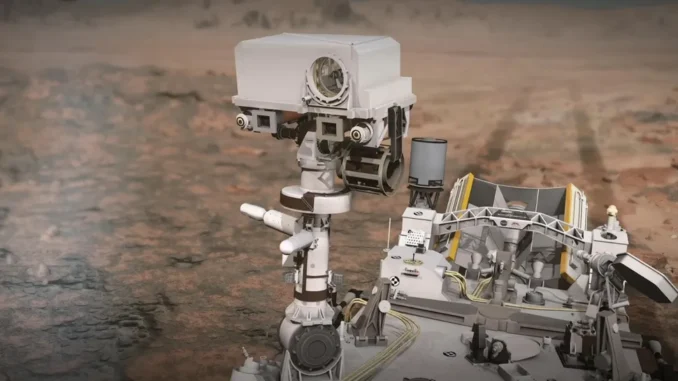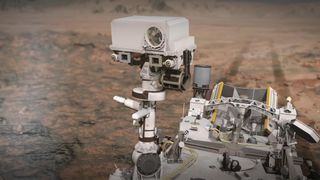
Did NASA’s Perseverance rover really find organics on Mars? These scientists aren’t so sure
A groundbreaking find on Mars sparks debate among scientists — could these organic molecules be a clue to life on the Red Planet, or something else?

(Image credit: NASA)
The quest to find life beyond our planet has captivated humanity for decades, driving missions that continue to push deeper into the solar system. Last summer, NASA’s Perseverance rover made a groundbreaking discovery on Mars when it detected carbon-based molecules, known as organics, that many scientists believe could hint at the possible presence of ancient extraterrestrial life.
The finding has fueled excitement and debate within the scientific community, as it brings us closer to answering the age-old question of whether life ever existed — or maybe still does — on the Red Planet.
However, there may be a bit of a caveat: Scientists can’t be sure that the signals are 100% attributable to organic molecules. Though, for many, the possibility is likely, it’s not the only explanation, and the uncertainty comes down to the rover’s instruments — they can provide strong indications and gather valuable data, but they are not as comprehensive as Earth-based laboratories.
For some background, Perseverance made the find using an advanced instrument called SHERLOC (Scanning Habitable Environments with Raman and Luminescence for Organics and Chemicals), which is designed to hunt for organic molecules.
Related: NASA’s Perseverance rover begins ambitious ascent up a Mars crater rim
“The SHERLOC instrument is our premier tool for detecting organic matter,” Ken Farley, project scientist for the Perseverance rover mission, told Space.com. “It’s really the only instrument that we think has a reasonable chance of finding organic matter at the concentrations that are likely present.”
SHERLOC relies on two primary techniques: deep ultraviolet luminescence and Raman spectrometry. “SHERLOC’s luminescence mode produces a very high signal per unit amount of certain organic molecules, but it is not especially diagnostic,” said Farley.
…………………………………………………………..
Did NASA’s Perseverance rover really find organics on Mars? These scientists aren’t so sure
last updated
A groundbreaking find on Mars sparks debate among scientists — could these organic molecules be a clue to life on the Red Planet, or something else?

(Image credit: NASA)
The quest to find life beyond our planet has captivated humanity for decades, driving missions that continue to push deeper into the solar system. Last summer, NASA’s Perseverance rover made a groundbreaking discovery on Mars when it detected carbon-based molecules, known as organics, that many scientists believe could hint at the possible presence of ancient extraterrestrial life.
The finding has fueled excitement and debate within the scientific community, as it brings us closer to answering the age-old question of whether life ever existed — or maybe still does — on the Red Planet.
However, there may be a bit of a caveat: Scientists can’t be sure that the signals are 100% attributable to organic molecules. Though, for many, the possibility is likely, it’s not the only explanation, and the uncertainty comes down to the rover’s instruments — they can provide strong indications and gather valuable data, but they are not as comprehensive as Earth-based laboratories.
For some background, Perseverance made the find using an advanced instrument called SHERLOC (Scanning Habitable Environments with Raman and Luminescence for Organics and Chemicals), which is designed to hunt for organic molecules.
Related: NASA’s Perseverance rover begins ambitious ascent up a Mars crater rim
“The SHERLOC instrument is our premier tool for detecting organic matter,” Ken Farley, project scientist for the Perseverance rover mission, told Space.com. “It’s really the only instrument that we think has a reasonable chance of finding organic matter at the concentrations that are likely present.”
SHERLOC relies on two primary techniques: deep ultraviolet luminescence and Raman spectrometry. “SHERLOC’s luminescence mode produces a very high signal per unit amount of certain organic molecules, but it is not especially diagnostic,” said Farley.
Be the first to comment